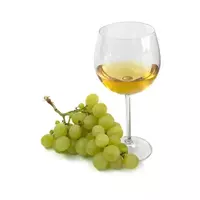Sherry wine

Sherry wine occupies an honorable place among aperitifs, gaining such a title due to its strong tonic properties. In addition, another advantage of this drink is that it does not drown out the taste of even dishes such as fish and smoked meats, in connection with which sherry will always be in place throughout the feast.
Sherry wine, meanwhile, refers to fortified drinks made from white grapes. They produce it in Spain, in a certain place, which is located between the cities of Sanlucar de Barrameda, El Puerto de Santa Maria and Jerez de la Frontera. By the way, it was the last settlement that gave the name to this fragrant drink.
This alcoholic beverage contains up to 20 percent alcohol. Sherry wine is inherent in a whole bunch of subtle aromas, which in turn have many facets. In the process of drinking, almond-nut, resinous and bulbous tones are caught in it, against the background of which notes of bird cherry or chamomile are exquisitely manifested. The harmonious taste of sherry wine can be described as soft and tender, in it you can distinguish a floral shade along with mushroom, as well as a well-manifested light brackish.
It is noteworthy that the life of any sherry wine begins with dry wine, which should completely bleed out. So, at the very beginning of autumn, grape clusters are harvested exclusively by hand, and then juice is obtained from them. After that, a rather stormy process of wort fermentation occurs in oak barrels. All winter, the drink is self-illuminated, and in early spring, samples are removed from each barrel, on the basis of which the resulting wines are classified and then fixed.
The lightest varieties of sherry wine, which are distinguished by an extraordinary aroma of purity, belong to the fino category. Their characteristic feature is that a continuous yeast film can be observed on the surface of such a drink, which acts as a protection of sherry during the entire maturation period from excessive contact with oxygen. It is thanks to this that sherry retains its lightness and light color in wine. Yeast processes residual sugar, which makes the drink dry and at the same time gives it a special savoury bouquet.
The second category of sherry, which is listed as oloroso, includes wines with a partially covered surface. The strength of such drinks is 17 percent, while during the aging process yeast dies, which causes the wine to oxidize. The result is dry and fragrant sherry with a viscous consistency, nutty flavour and dark amber colour.
Not particularly aromatic and the heaviest varieties of sherry wine belong to the raya category. Generally, such beverages are distilled into alcohols from which brandy or vinegar is made.
Sweet sherry wine is perfectly combined with a wide variety of dessert dishes. More aged drinks accompany coffee with cigars or cigarettes as well as possible. In addition, the use of sherry within reasonable limits has a beneficial effect on digestion, so it is able to act as a digestif.
sherry wines 126 kCal
Energy value of sherry wine (Ratio of proteins, fats, carbohydrates - ju):
Proteins: 0 g (~ 0 kCal)
Fats: 0 g (~ 0 kCal)
Carbohydrates: 3g (~ 12kCal)
Energy ratio (bj | y): 0% | 0% | 10%
 Español
Español Français
Français Português
Português Русский
Русский 简体中文
简体中文 繁體中文
繁體中文 日本語
日本語 한국어
한국어 العربية
العربية Türkçe
Türkçe Қазақ
Қазақ Deutsch
Deutsch Italiano
Italiano Українська
Українська
